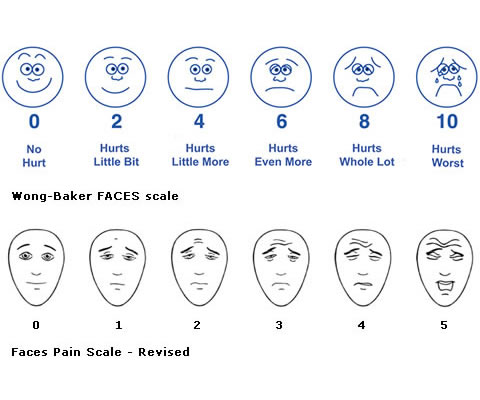Effective pain assessment is the key to good pain management.
Consider pain as a vital sign. Assess regularly with other observations.
Assessment of pain can be challenging if communication is not possible. A child with severe pain may cry and scream, or they may lie very still to avoid causing more pain.
There are three ways to assess pain:
- Self report: measuring expressed experience of pain
- Behaviour/observational: measuring behavioural distress and observational assessment of behaviour by parent/carer
- Measurement of physiological response to pain, e.g. changes in heart rate, respiratory rate, BP
Question: Think how you would assess pain in a young child. Write down five things that you would assess.

Effective pain assessment is the key to good pain management.
Consider pain as a vital sign. Assess regularly with other observations.
Assessment of pain can be challenging if communication is not possible. A child with severe pain may cry and scream, or they may lie very still to avoid causing more pain.
There are three ways to assess pain:
- Self report: measuring expressed experience of pain
- Behaviour/observational: measuring behavioural distress and observational assessment of behaviour by parent/carer
- Measurement of physiological response to pain, e.g. changes in heart rate, respiratory rate, BP
Question: Think how you would assess pain in a young child. Write down five things that you would assess.
Answer: Ask the child and the parents:
- Where is the pain?
- When do you feel the pain?
- What is the character of the pain?
- What brings it on?
- What relieves the pain?
There are also a number of formal observational tools to use in children, covered in the next few pages.